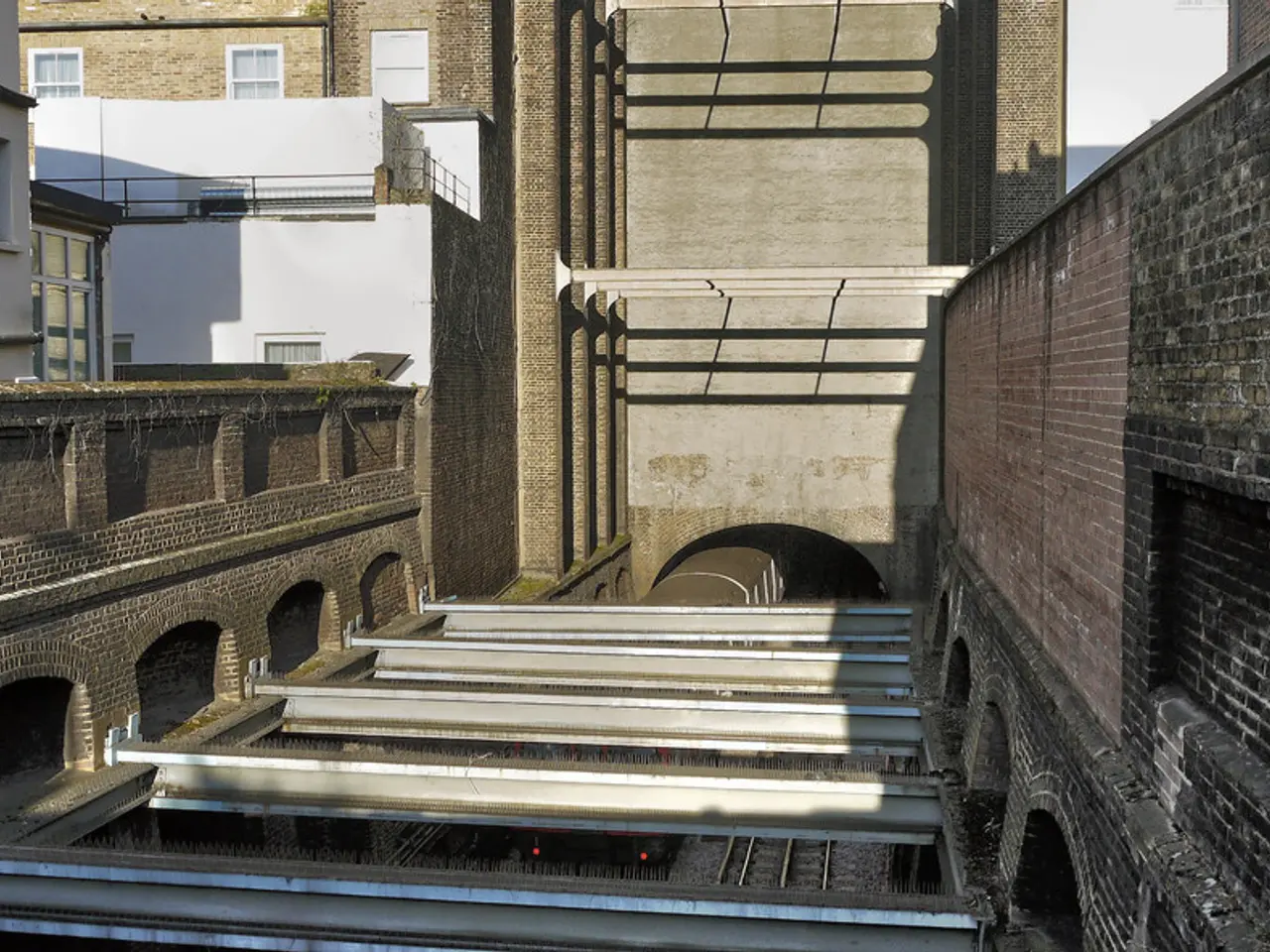Delay in Construction of Rail Tunnel Link between Denmark and Germany by Several Years
Fehmarn Belt Tunnel Project: Construction of German Railway Tunnel Underway
The Fehmarn Belt tunnel, a groundbreaking 18-kilometer underwater tunnel currently under construction, is set to revolutionize travel and trade between Denmark and Germany. The tunnel, scheduled for completion in 2029, will carry both road traffic and a railway tunnel to connect with the German mainland rail network.
The Fehmarn Belt link will connect Rødbyhavn on the Danish island of Lolland with Fehmarn in Germany, significantly reducing ferry crossing times and enhancing freight and passenger rail transport across northern Europe. The combined project, which includes an immersed road and rail tunnel, is on track to open by late 2029, facilitating faster train travel from Copenhagen to Hamburg and forming part of a new European rail freight corridor extending from Denmark through Germany to Italy.
Deutsche Bahn, Germany's national rail company, has begun construction on the 88-kilometer rail link between the village of Puttgarden on Fehmarn and Lübeck in Schleswig-Holstein, Germany. This link will connect with the Fehmarnbelt Fixed Link tunnel. The associated rail link on the German mainland is essential for connecting the tunnel to the wider European network.
The assembly of tunnel segments for the Fehmarnbelt Tunnel is scheduled to begin in 2025, with the Danish state-owned Femern Link Contractors managing the design and construction. The tunnel's opening is targeted for 2029, assuming everything proceeds as planned. The German railway tunnel, on the other hand, is yet to receive final approval and has not started construction.
The progress on the railway tunnel and rail connection is critical for the overall Fehmarn Belt project completion date. Delays in the rail link or tunnel assembly could push back the estimated 2029 opening. However, as of mid-2025, timelines appear aligned with a 2029 operational date for the entire cross-Baltic connection.
Danish Transport Minister Thomas Danielsen has contacted the German Ministry of Transport to request a detailed clarification regarding the directive issued by the German rail authority, which states that the construction of the second tunnel will take six years. The company Femern A/S, part of Sund & Bælt, is directing the Danish side of the tunnel project.
It's important to note that the Fehmarn Sound Bridge, a road bridge between the island of Fehmarn and mainland Germany, exists and will allow for road traffic to continue. Danielsen emphasizes that cars and other road traffic will still be able to cross the Fehmarn once the Denmark-Germany link is completed.
The potential delays in the Fehmarn Belt tunnel project are still a possibility, as mentioned earlier. However, with construction well underway and integral to meeting the Fehmarn Belt project's 2029 completion target, the future of faster and more efficient travel and trade between Denmark and Germany is promising.
The construction of the railway tunnel, an integral part of the Fehmarn Belt Tunnel Project, will not only revolutionize public-transit and transportation between Denmark and Germany but also connect with the German mainland rail network, thus facilitating faster business travel from Copenhagen to Hamburg. The financial sector is closely watching the progress of the rail link and tunnel assembly, as any delay could significantly impact the future of trade and investment within the industry.




